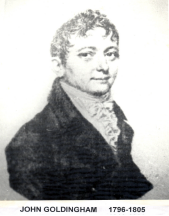
Astronomer Royal is a senior post in the Royal Households of the United Kingdom. There are two officers, the senior being the astronomer royal dating from 22 June 1675; the junior is the astronomer royal for Scotland dating from 1834. The Astronomer Royal works to make observations to improve navigation, cartography, instrument design, and applications of geomagnetism. The position was created with the overall goal of discovering a way to determine longitude at sea when out of sight of land.

Longitude is a geographic coordinate that specifies the east–west position of a point on the surface of the Earth, or another celestial body. It is an angular measurement, usually expressed in degrees and denoted by the Greek letter lambda (λ). Meridians are imaginary semicircular lines running from pole to pole that connect points with the same longitude. The prime meridian defines 0° longitude; by convention the International Reference Meridian for the Earth passes near the Royal Observatory in Greenwich, south-east London on the island of Great Britain. Positive longitudes are east of the prime meridian, and negative ones are west.
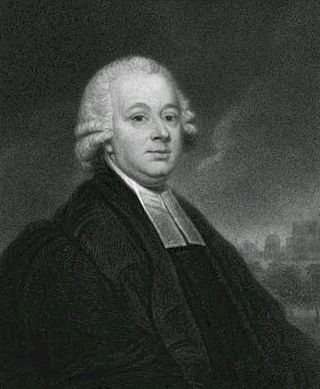
Nevil Maskelyne was the fifth British Astronomer Royal. He held the office from 1765 to 1811. He was the first person to scientifically measure the mass of the planet Earth. He created The Nautical Almanac, in full the British Nautical Almanac and Astronomical Ephemeris for the Meridian of the Royal Observatory at Greenwich using Tobias Mayer's corrections for Euler's Lunar Theory tables.

Sir Edward Sabine was an Irish astronomer, geophysicist, ornithologist, explorer, soldier and the 30th president of the Royal Society.
Charles Green was a British astronomer, noted for his assignment by the Royal Society in 1768 to the expedition sent to the Pacific Ocean in order to observe the transit of Venus aboard James Cook's Endeavour.
Madras Time was a time zone established in 1802 by John Goldingham, the first official astronomer of the British East India Company in British India when he determined the longitude of Madras as 5 hours, 21 minutes and 14 seconds ahead of Greenwich Mean Time. It has been described as 8 minutes and 46 seconds from UTC+05:30 and 32 minutes and 6 seconds behind Calcutta Time which puts it at (UTC+05:21:14). Before India's independence, it was the closest precursor to Indian Standard Time which is derived from the location of the observatory at 82.5°E longitude in Shankargarh Allahabad in Uttar Pradesh.

Michael Topping (1747–1796) was the Chief Marine Surveyor of Fort St. George in Chennai responsible for founding the oldest modern technical school outside Europe. The Survey School was completed on 17 May 1794, with an initial intake of eight students. In 1858 it became the Civil Engineering School and the College of Engineering in 1861.

The Madras Observatory was an astronomical observatory which had its origins in a private observatory set up by William Petrie in 1786 and later moved and managed by the British East India Company from 1792 in Madras. The main purpose for establishing it was to assist in navigation and mapping by recording the latitude and maintaining time standards. In later years the observatory also made observations on stars and geomagnetism. The observatory ran from around 1792 to 1931 and a major work was the production of a comprehensive catalogue of stars.

A marine chronometer is a precision timepiece that is carried on a ship and employed in the determination of the ship's position by celestial navigation. It is used to determine longitude by comparing Greenwich Mean Time (GMT), and the time at the current location found from observations of celestial bodies. When first developed in the 18th century, it was a major technical achievement, as accurate knowledge of the time over a long sea voyage was vital for effective navigation, lacking electronic or communications aids. The first true chronometer was the life work of one man, John Harrison, spanning 31 years of persistent experimentation and testing that revolutionized naval navigation.
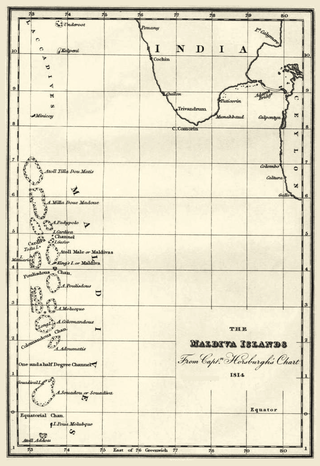
James Horsburgh F.R.S was a Scottish hydrographer. He worked for the British East India Company, (EIC) and mapped many seaways in the Indian Ocean, the Malay Archipelago, and China in the late 18th century and early 19th century. He is best-known for the India Directory, a set of sailing directions that became a standard work for over half a century.

The history of longitude describes the centuries-long effort by astronomers, cartographers and navigators to discover a means of determining the longitude of any given place on Earth. The measurement of longitude is important to both cartography and navigation. In particular, for safe ocean navigation, knowledge of both latitude and longitude is required, however latitude can be determined with good accuracy with local astronomical observations.

Rømer's determination of the speed of light was the demonstration in 1676 that light has an apprehensible, measurable speed and so does not travel instantaneously. The discovery is usually attributed to Danish astronomer Ole Rømer, who was working at the Royal Observatory in Paris at the time.
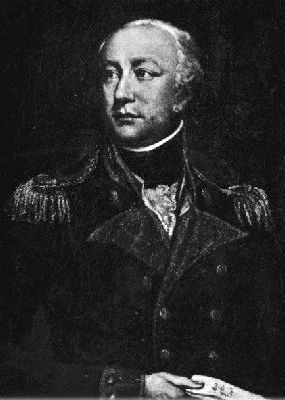
William Mudge (1762–1820) was an English artillery officer and surveyor, born in Plymouth, an important figure in the work of the Ordnance Survey.
Reuben Burrow was an English mathematician, surveyor and orientalist. Initially a teacher, he was appointed assistant to Sir Nevil Maskelyne, the fifth Astronomer Royal, at the Royal Greenwich Observatory, and was involved in the Schiehallion experiment. He later conducted research in India, teaching himself Sanskrit and becoming one of the first members of the Asiatic Society. He was the first to measure the length of a degree of an arc of longitude along the Tropic of Cancer. His other major achievements included a study of Indian mathematics, although he earned a reputation for being rude and unpolished amid the leading figures in science who came mostly from the upper-class. One commentator called him "an able mathematician but a most vulgar and scurrilous dog."
Samuel Dunn (1723–1794) was a British mathematician, teacher, cartographer and amateur astronomer.
The Anglo-French Survey (1784–1790) was the geodetic survey to measure the relative position of the Royal Greenwich Observatory and the Paris Observatory via triangulation. The English operations, executed by William Roy, consisted of the measurements of bases at Hounslow Heath (1784) and Romney Marsh (1787), the measurements of the angles of the triangles (1787–1788) and finally the calculation of all the triangles (1788–1790). The survey is very significant as the first precise survey within Britain, and the forerunner of the work of the Ordnance Survey which was founded in 1791, one year after Roy's death.

Thomas Glanville Taylor was an English astronomer who worked extensively at the Madras Observatory and produced the Madras Catalogue of Stars from around 1831 to 1839.

John Caldecott was an East India Company commercial agent, meteorologist and astronomer who worked in the court of the Raja of Travancore at the Trivandrum Observatory.
William Stephen Jacob (1813–1862) was an English immigrant astronomer in India, who acted as the director of the Madras Observatory from 1848 to 1859. His early claim of 1855 to have detected an exoplanet, in orbit around 70 Ophiuchi, is now thought to have been mistaken.
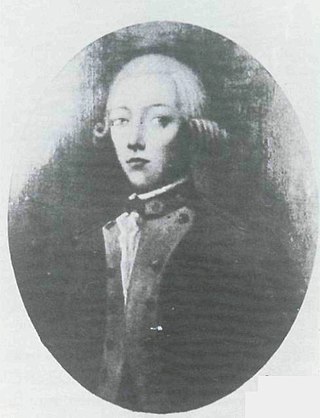
Jean Baptiste François Joseph de Warren or John Warren was an army captain and later Lieutenant Colonel with Her Majesty's 33rd Regiment of Foot, East India Company in India, surveyor and amateur astronomer. While working as a surveyor in the Great Trigonometrical Survey he rediscovered what became the Kolar Gold Fields and in later life he documented Indian astronomy and time-keeping in his book Kala Sankalita.
